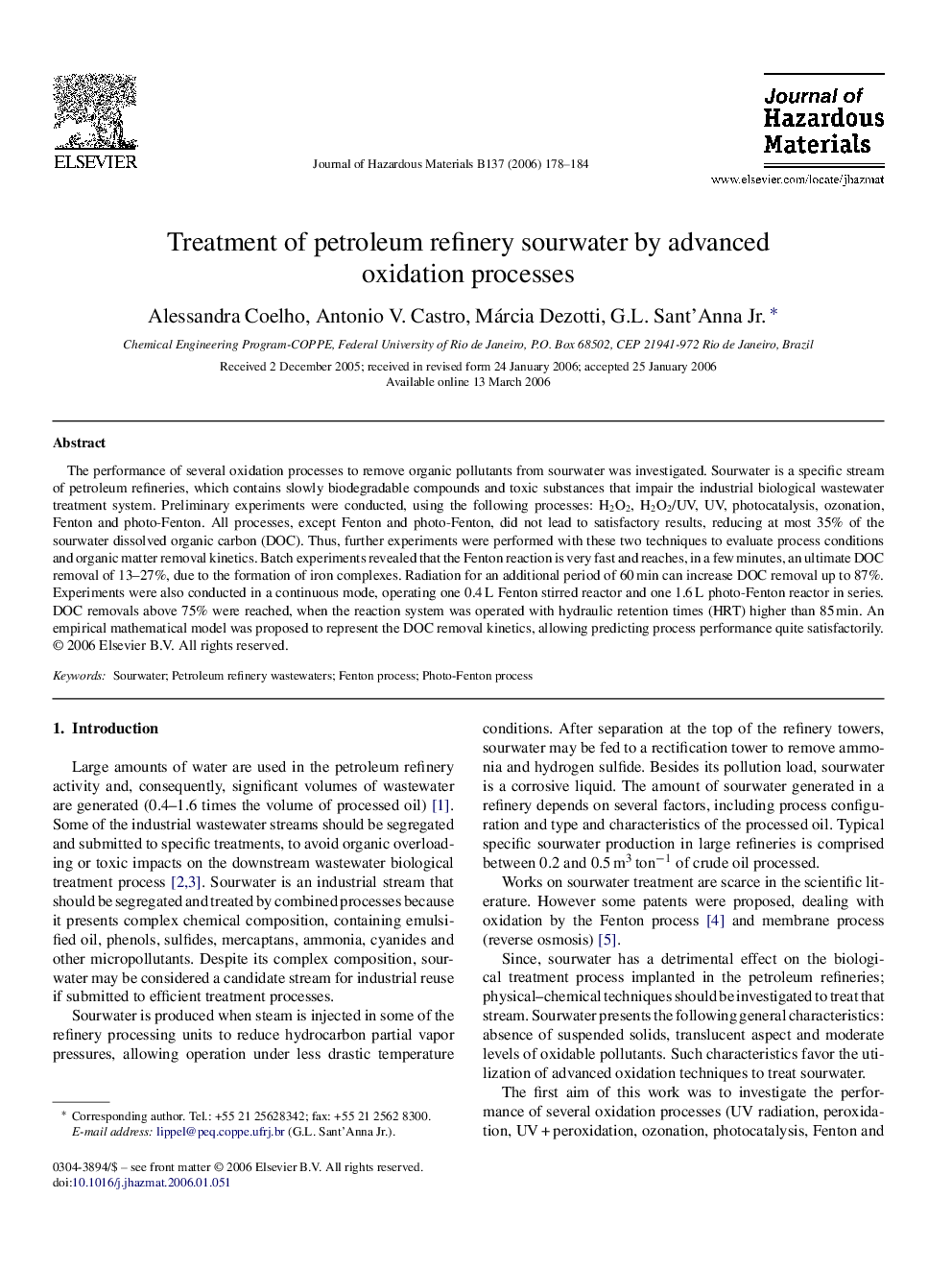| Article ID | Journal | Published Year | Pages | File Type |
|---|---|---|---|---|
| 585438 | Journal of Hazardous Materials | 2006 | 7 Pages |
Abstract
The performance of several oxidation processes to remove organic pollutants from sourwater was investigated. Sourwater is a specific stream of petroleum refineries, which contains slowly biodegradable compounds and toxic substances that impair the industrial biological wastewater treatment system. Preliminary experiments were conducted, using the following processes: H2O2, H2O2/UV, UV, photocatalysis, ozonation, Fenton and photo-Fenton. All processes, except Fenton and photo-Fenton, did not lead to satisfactory results, reducing at most 35% of the sourwater dissolved organic carbon (DOC). Thus, further experiments were performed with these two techniques to evaluate process conditions and organic matter removal kinetics. Batch experiments revealed that the Fenton reaction is very fast and reaches, in a few minutes, an ultimate DOC removal of 13-27%, due to the formation of iron complexes. Radiation for an additional period of 60Â min can increase DOC removal up to 87%. Experiments were also conducted in a continuous mode, operating one 0.4Â L Fenton stirred reactor and one 1.6Â L photo-Fenton reactor in series. DOC removals above 75% were reached, when the reaction system was operated with hydraulic retention times (HRT) higher than 85Â min. An empirical mathematical model was proposed to represent the DOC removal kinetics, allowing predicting process performance quite satisfactorily.
Keywords
Related Topics
Physical Sciences and Engineering
Chemical Engineering
Chemical Health and Safety
Authors
Alessandra Coelho, Antonio V. Castro, Márcia Dezotti, G.L. Jr.,
